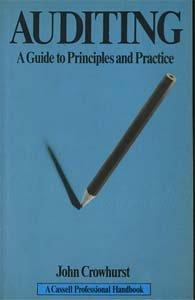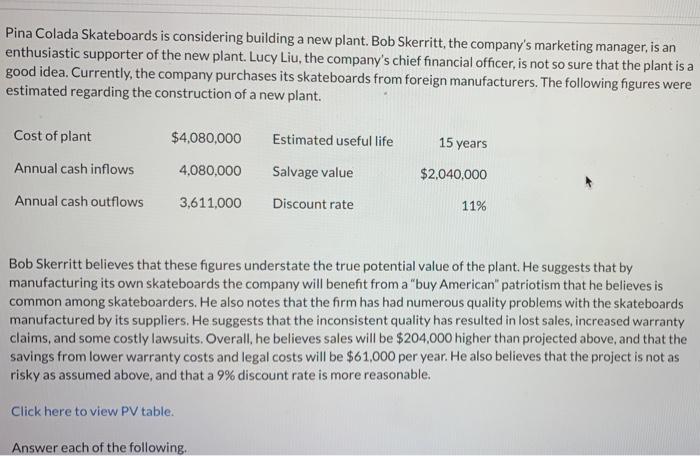
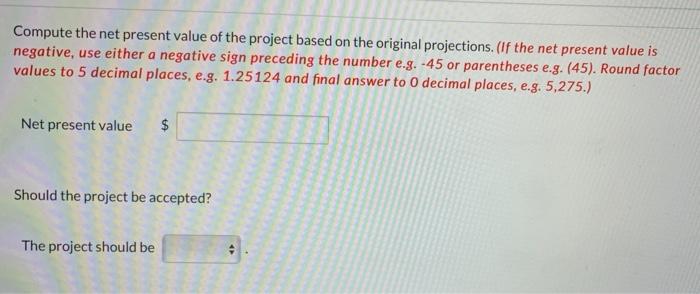
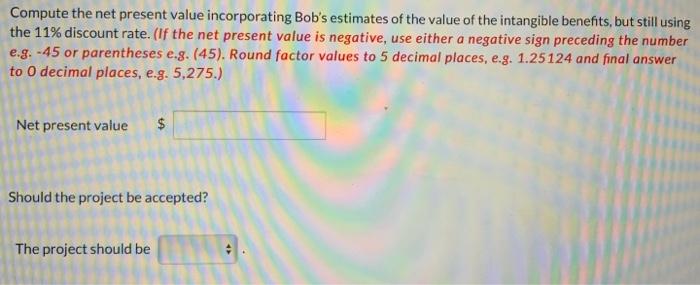
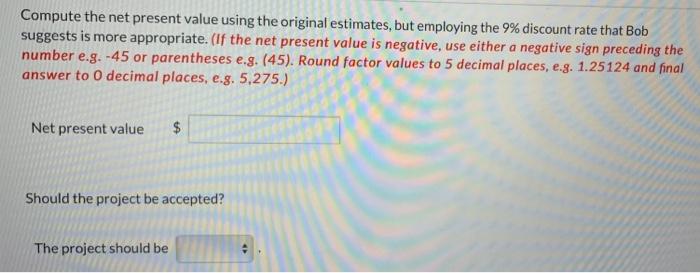
Pina Colada Skateboards is considering building a new plant. Bob Skerritt, the company's marketing manager, is an enthusiastic supporter of the new plant. Lucy Liu, the company's chief financial officer, is not so sure that the plant is a good idea. Currently, the company purchases its skateboards from foreign manufacturers. The following figures were estimated regarding the construction of a new plant. Cost of plant $4,080,000 Estimated useful life 15 years Annual cash inflows 4.080.000 Salvage value $2,040,000 Annual cash outflows 3,611,000 Discount rate 11% Bob Skerritt believes that these figures understate the true potential value of the plant. He suggests that by manufacturing its own skateboards the company will benefit from a "buy American" patriotism that he believes is common among skateboarders. He also notes that the firm has had numerous quality problems with the skateboards manufactured by its suppliers. He suggests that the inconsistent quality has resulted in lost sales, increased warranty claims, and some costly lawsuits. Overall, he believes sales will be $204,000 higher than projected above, and that the savings from lower warranty costs and legal costs will be $61,000 per year. He also believes that the project is not as risky as assumed above, and that a 9% discount rate is more reasonable. Click here to view PV table. Answer each of the following. Compute the net present value of the project based on the original projections. (If the net present value is negative, use either a negative sign preceding the number e.g. -45 or parentheses e.g. (45). Round factor values to 5 decimal places, e.g. 1.25124 and final answer to 0 decimal places, e.g. 5,275.) Net present value $ Should the project be accepted? The project should be Compute the net present value incorporating Bob's estimates of the value of the intangible benefits, but still using the 11% discount rate. (If the net present value is negative, use either a negative sign preceding the number e.g. -45 or parentheses e.g. (45). Round factor values to 5 decimal places, e.g. 1.25124 and final answer to O decimal places, e.g. 5,275.) Net present value $ $ Should the project be accepted? The project should be Compute the net present value using the original estimates, but employing the 9% discount rate that Bob suggests is more appropriate. (If the net present value is negative, use either a negative sign preceding the number e.g.-45 or parentheses e.g. (45). Round factor values to 5 decimal places, e.g. 1.25124 and final answer to 0 decimal places, e.g. 5,275.) Net present value $ Should the project be accepted? The project should be










